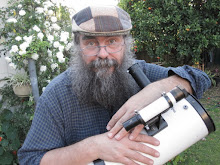Tuesday, January 07, 2025
Thursday January 9 to Thursday January 16
The Full Moon is Tuesday January 14. In the evening Venus is coming closer to Saturn. Jupiter, Saturn, Venus and Mars are visible all together (briefly) in the evening sky. Venus is at it's greatest distance from the Sun on the 10th. Jupiter is past opposition and is visible all evening long. Jupiter is near the Moon on the 10th. Mars is rising in the evening sky, and is at opposition, when it is biggest and brightest as seen from Earth, on the 16th. The Moon is close to Mars on the 14th. Mercury is low in the morning twilight.
The Full Moon is Tuesday January 14.
Venus is readily visible from early twilight to when the sky is fully dark. Venus is coming closer to Saturn.Venus is at its furthest from the Sun on this day.
The insets are the telescopic views of Venus and Saturn at this time.
Similar views will be seen from the rest of Australia at roughly the equivalent local time (90 minutes after sunset).
Similar views will be seen from the rest of Australia at roughly the equivalent local time (90 minutes after sunset).
Elsewhere in Australia will see a similar view at the equivalent time (90 minutes after sunset).
Mercury is low in the morning twilight.
Venus climbs higher in the evening twilight and is readily visible in the evening twilight. Venus is coming closer to Saturn. On the 3rd the thin crescent Moon is close to Venus. Venus is at it's greatest distance from the Sun on the 10th.
Mars is now rising in the evening sky. Mars is at opposition, when it is biggest and brightest as seen from Earth, on the 16thand is visible all night long. The Moon is close to Mars on the 14th.
Jupiter is rising in the the evening sky when the sky is fully dark and was at opposition, when it was biggest and brightest as seen from Earth, on the December the 8th. Jupiter is near the Moon on the 10th.
Saturn is lowering in the evening sky coming closer to Venus.
Star Map via Virtual sky. Use your mouse to scroll around and press 8 when your pointer is in the map to set to the current time.
Cloud cover predictions can be found at SkippySky.
Here is the near-real time satellite view of the clouds (day and night) http://satview.bom.gov.au/
Labels: weekly sky








 Click to read about or order
Click to read about or order Click to read about or order
Click to read about or order Click to read about or order
Click to read about or order Click to read about or order
Click to read about or order




